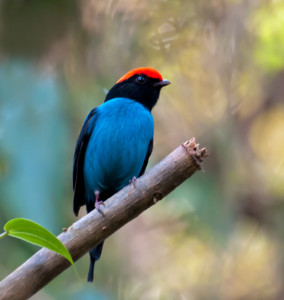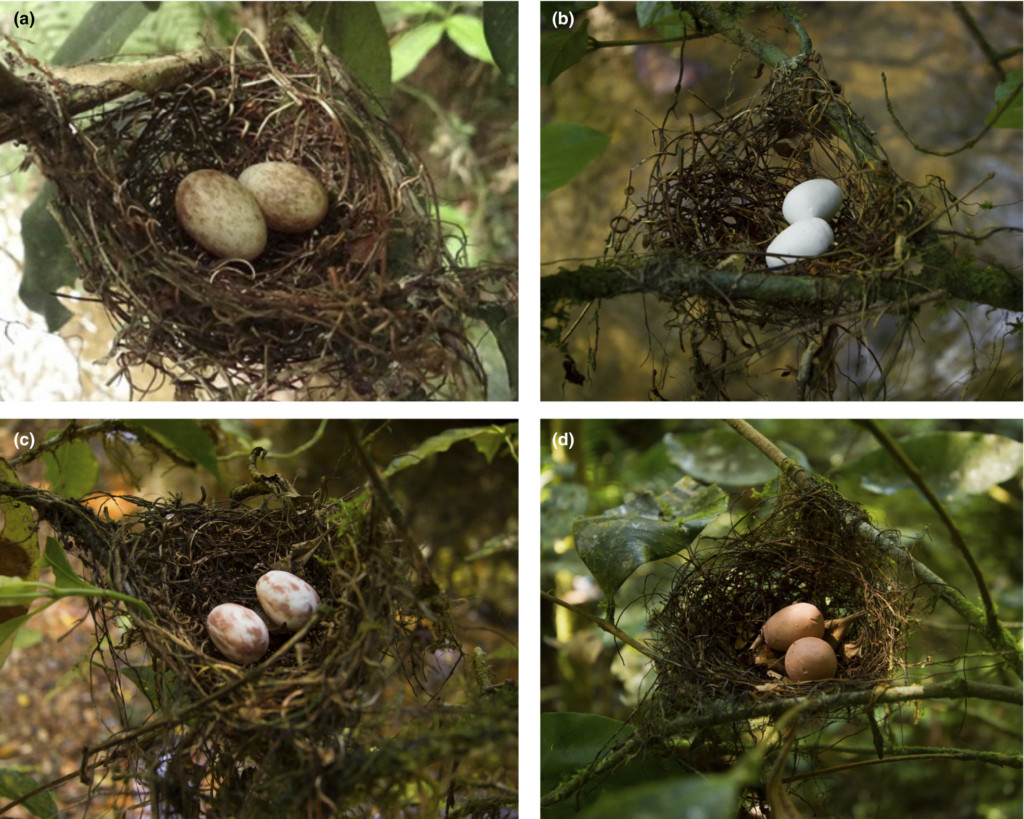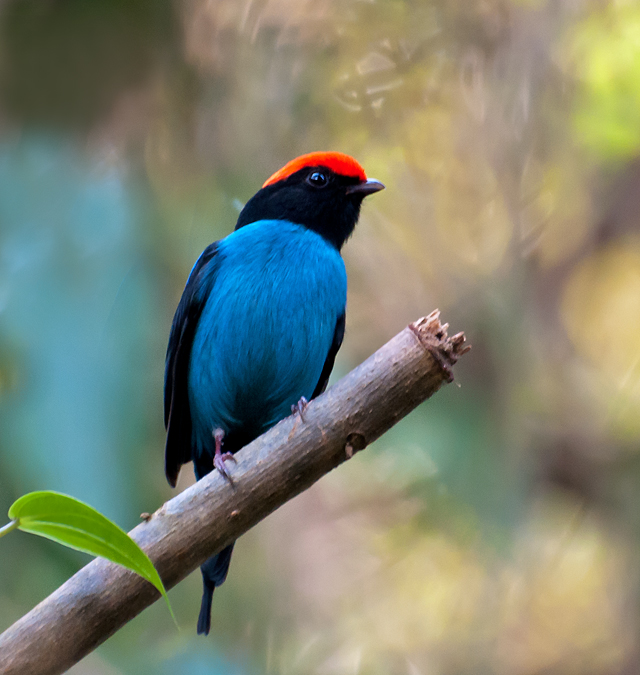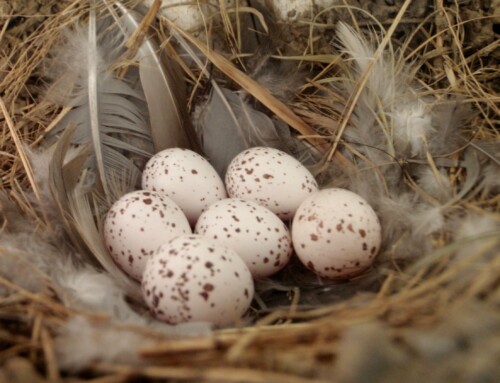
LINKED PAPER
The influence of egg presence and eggshell colour in the attraction of visually oriented predators to nests of a tropical forest bird. Zima, P. V., Perrella, D. F., & Francisco, M. R. 2021. IBIS. DOI: 10.1111/ibi.12926. VIEW
One of the big mysteries in ornithology is the pigmentation of eggshells, from the blueish eggs of the Common Starling (Sturnus vulgaris) to the brown-dotted eggs of the Blue Tit (Cyanistes caeruleus). What is the function of these different colours? Researchers have proposed numerous hypotheses to explain this variation in colours, such as thermoregulation (Stoddard et al. 2011), protection against UV-light (Maurer et al. 2011) and signalling the quality of the female (Moreno & Osorno 2003). However, another obvious explanation might be related to camouflage: colour patterns on eggs could have evolved to avoid detection by nest predators (Cherry & Gosler 2010). A recent study tested this idea in the Blue Manakin (Chiroxiphia caudata), using a series of clever experiments.
Camera traps
Between 2016 and 2018, Paulo Zima and his colleagues searched the Carlos Botelho State Park (Brazil) for empty nests of the Blue Manakin. Some nests were left empty, while others received a set of plasticine eggs. The researchers tested three colour patterns: white, white with tawny-brown blotches and tawny-brown. To identify potential nest predators, the nests were monitored with infrared, motion-triggered camera traps. This set-up caught six species of nest predator red-handed: Green-billed Toucan (Ramphastos dicolorus), Red-crowned Ant-tanager (Habia rubica), Buff-fronted Foliage-gleaner (Dendroma rufa), Giant Antshrike (Batara cinerea), Greenish Schiffornis (Schiffornis virescens), and White-eyed Foliage-gleaner (Automolus leucophthalmus).

Figure 1. Natural nests of the Blue Manakin containing: (a) real eggs, (b) white plasticine eggs, (c) white plasticine eggs with tawny-brown blotches and (d) tawny-brown plasticine eggs.
Foraging cues
Interestingly, the visits of these nest predators were not associated with the presence or the colour of the eggs. Empty nests were visited as often as nests containing plasticine eggs. These findings do not support the camouflage hypothesis for the colour of Blue Manakin eggs. However, they do provide some evidence for another phenomenon, namely the idea that nest predators use nests as foraging cues (Götmark 1992). While looking for food, these species have learned to identify nests in the dense tangle of vegetation. This search strategy puts strong selection pressures on their target species, such as the Blue Manakin, to properly conceal their nests. Selection for well-camouflaged nests might thus be stronger than selection for well-camouflaged eggs. This would explain why the researchers found no support for the egg camouflage hypothesis. In the end, the colour of Blue Manakin eggs remains an exciting, ornithological mystery.
References
& (2010). Avian eggshell coloration: new perspectives on adaptive explanations. Biological Journal of the Linnean Society 100: 753– 762. VIEW
(1992). Blue eggs do not reduce nest predation in the Song Thrush, Turdus philomelos. Behavioral Ecology and Sociobiology 30: 245– 252. VIEW
, & (2011). Review: an embryo’s eye view of avian eggshell pigmentation. Journal of Avian Biology 42: 494– 504. VIEW
& (2003). Avian egg colour and sexual selection: does eggshell pigmentation reflect female condition and genetic quality? Ecology Letters 6: 803– 806. VIEW
Stoddard, M.C., Marshall, K.L.A. & Kilner, M. (2011). Imperfectly camouflaged avian eggs: artifact or adaptation? Avian Biology Research 4: 196– 213. VIEW
Image credits
Top right: Blue Manakin (Chiroxiphia caudata) | Dario Sanches | CC BY-SA 2.0 Wikimedia Commons
Blog posts express the views of the individual author(s) and not those of the BOU.
If you want to write about your research in #theBOUblog, then please see here




